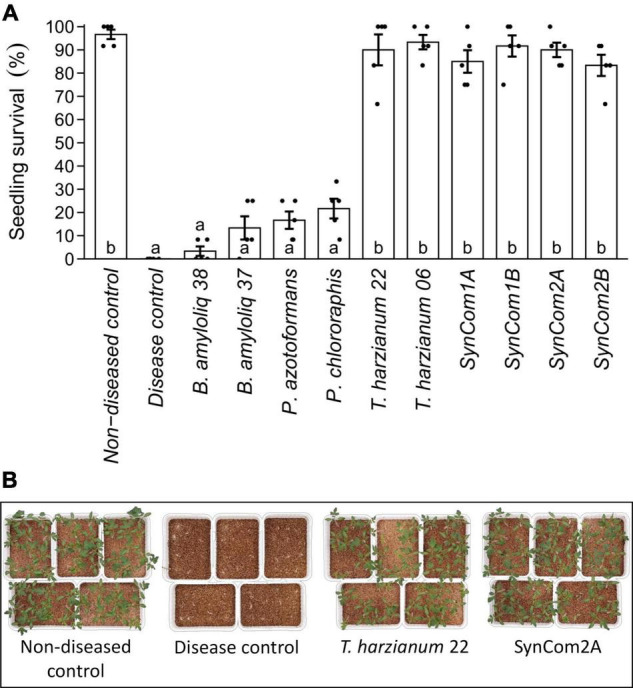FIGURE 1.

Effect of microbial inoculation on disease caused by the soil-borne pathogen Fusarium oxysporum. (A) Survival of tomato plants after 15 days of growth in F. oxysporum-infected soil. Seeds were either water-inoculated (“disease control”) or inoculated with the individual or consortia treatments (see Supplementary Table 2). A “non-diseased control” was also included, where water-inoculated seeds were sown in soil without F. oxysporum. Single strains were inoculated at 1 × 107 cfu/plant and the consortia were inoculated at the same concentration for each microorganism (SynCom1A, SynCom2A) or at 1 × 107 cfu/plant total microbial concentration (SynCom1B, SynCom2B). Bars represent predicted mean ± SE of the probability of seedling survival based on a generalized linear model with binomial distribution and logit link function. Black dots represent raw data points. Treatments not sharing a letter in common are significantly different based on the Tukey honestly significant difference (HSD) test (p < 0.05, n = 5). (B) Survival of plant seedlings in F. oxysporum-infected soil. Pictures illustrate plant survival in non-diseased and disease control, Trichoderma harzianum, and SynCom2A treatments.
